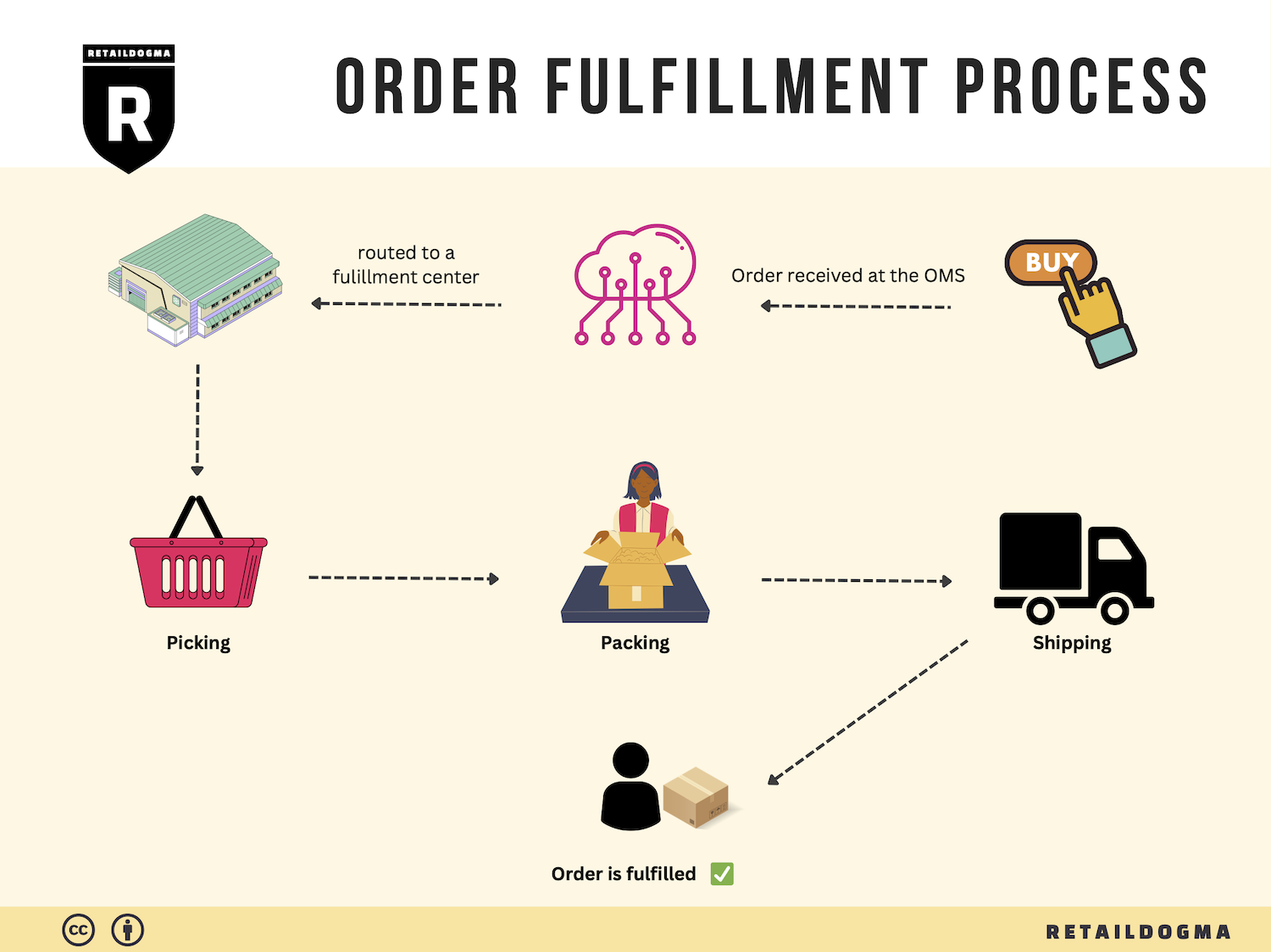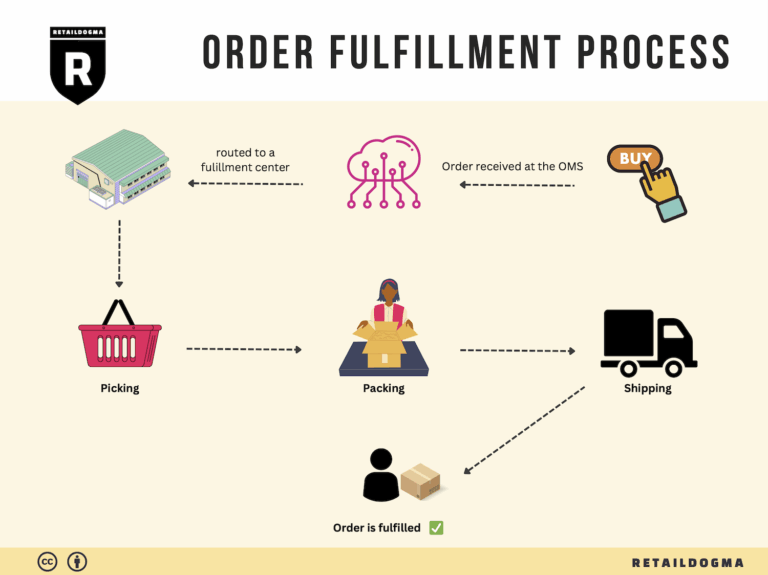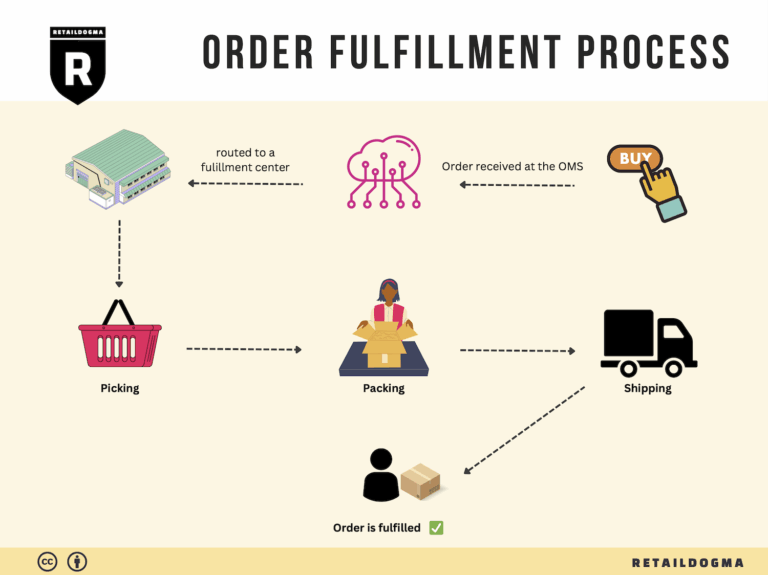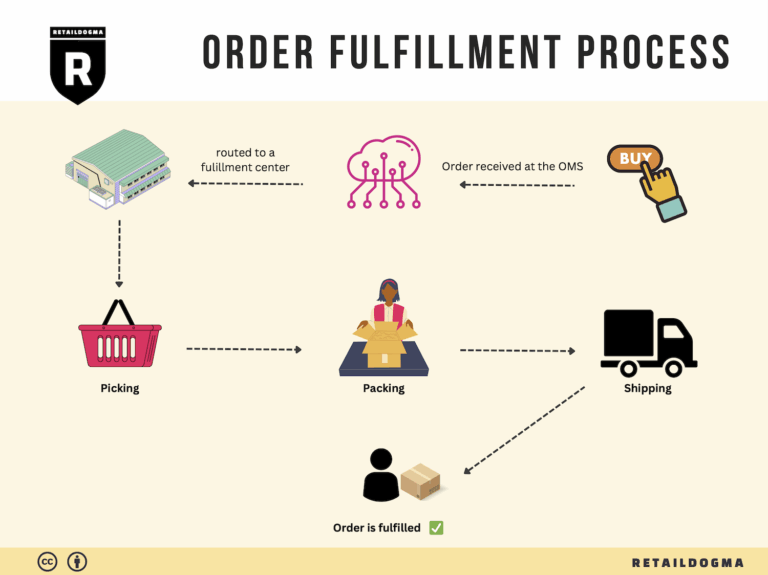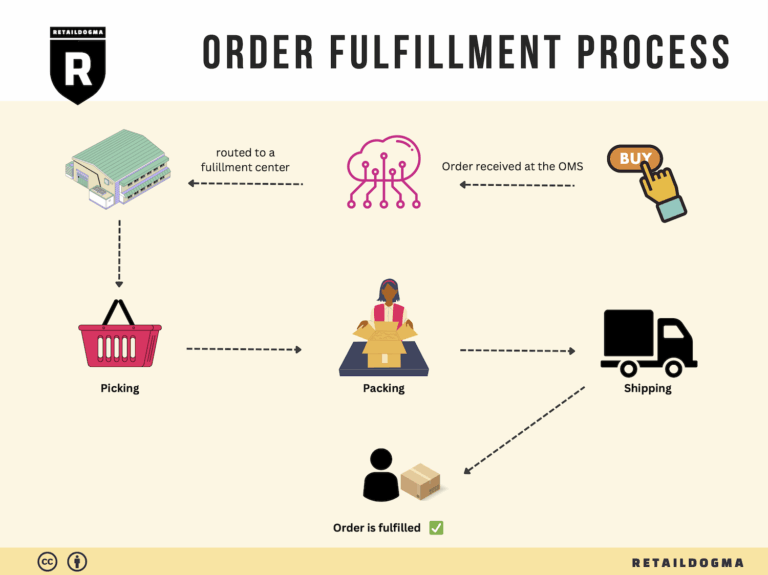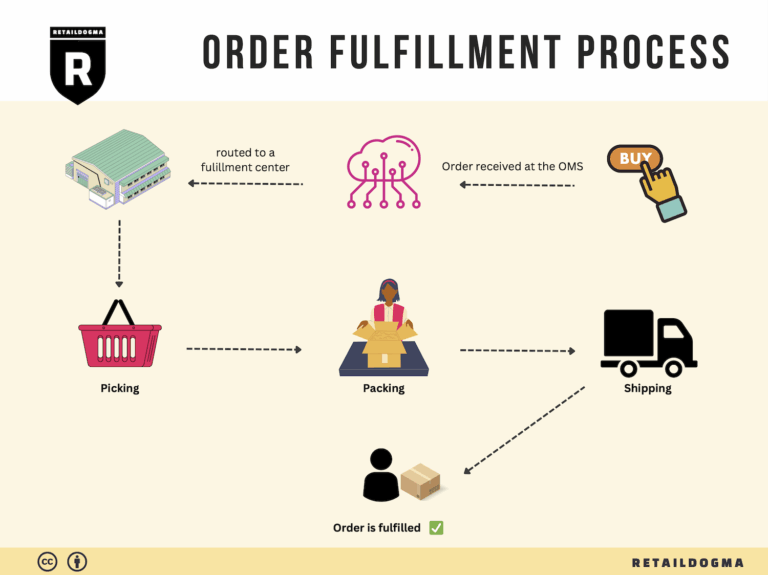Ecommerce Fulfillment Services: The Ultimate Guide (2025)
What is E-commerce Fulfillment? An Introduction for Growing Businesses
Understanding the Challenges of E-commerce Fulfillment
As your online business begins to grow, you may find yourself facing the daunting task of managing packing and shipping orders. This process can quickly become overwhelming, particularly when you’re trying to balance it with other critical aspects of running your business. Efficiently getting products to your customers is crucial not only for maintaining satisfaction but also for scaling operations effectively.
E-commerce fulfillment is simply the process of getting a product from your inventory to your customer’s doorstep. This involves several key steps: receiving orders, picking items from your inventory, packing them securely, and shipping them out. For growing businesses, navigating these processes can be challenging, especially when orders start to increase.
What This Guide Covers
In this comprehensive guide, we will explore the various fulfillment models available to e-commerce businesses, such as Third-Party Logistics (3PL) and Fulfillment by Amazon (FBA). Each model has its unique advantages and can significantly impact your operational efficiency.
We will delve into core services that fulfillment partners typically offer, including inventory management, order processing, and customer service support. Understanding these services will help you determine which aspects of fulfillment are most critical to your business needs.
Choosing the right fulfillment partner is a pivotal decision that can influence your overall success. We will provide practical tips on what to look for in a partner, including their technology capabilities, location advantages, and customer service quality.
Additionally, we will address pricing models for fulfillment services to help you understand the cost implications of different options. Transparency in pricing is essential for making informed decisions that align with your budget and growth objectives.
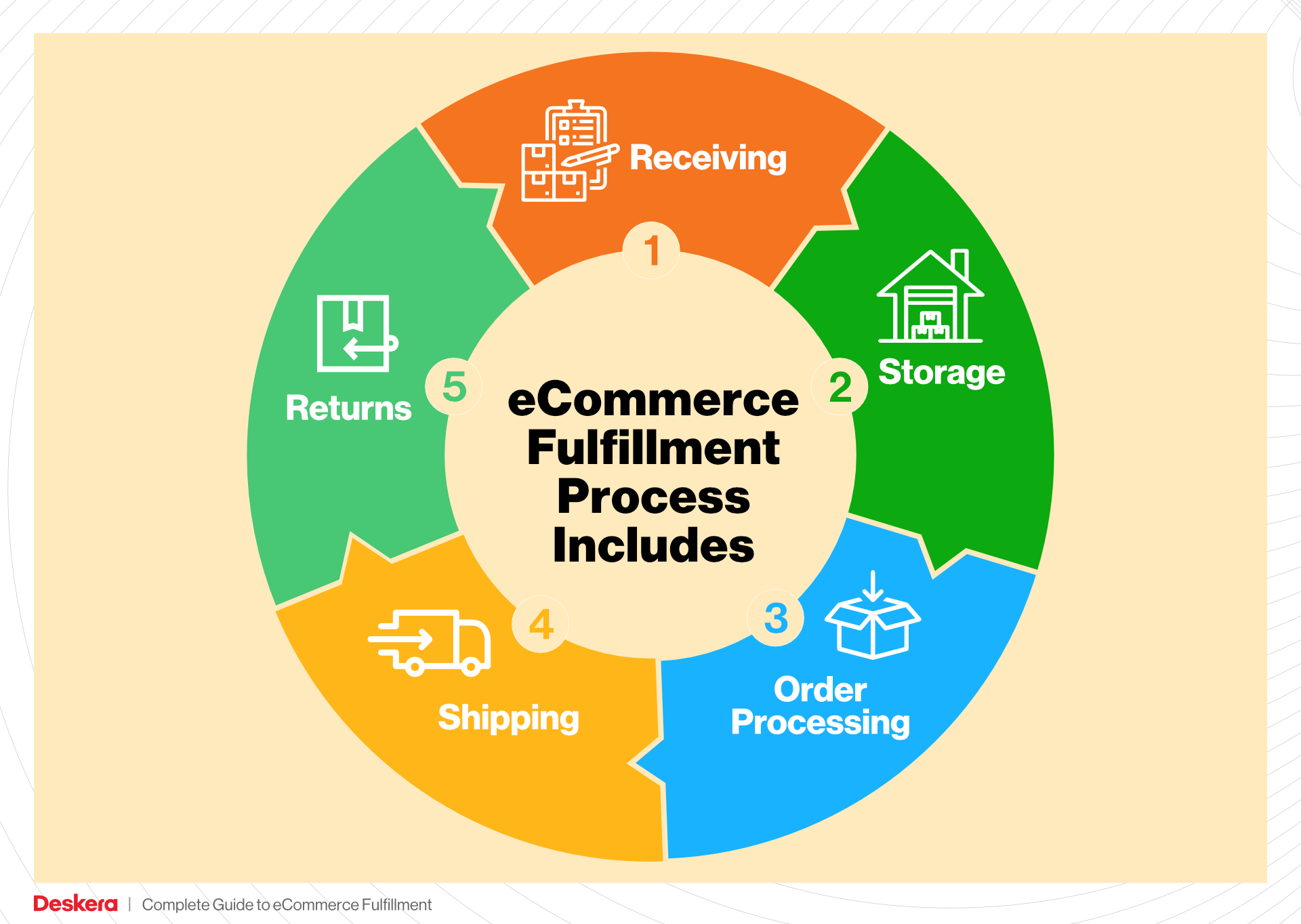
Empowering Smart Logistics Decisions
The goal of this guide is to empower you, the business owner or operations manager, to make informed and strategic decisions about your logistics. As your business scales, the right fulfillment strategy can enhance customer satisfaction, streamline operations, and ultimately lead to sustained growth. By understanding the intricacies of e-commerce fulfillment, you can alleviate the burden of order management and focus on what you do best: growing your business.
What You’ll Learn In This Guide
- What is E-commerce Fulfillment? An Introduction for Growing Businesses
- The Order Fulfillment Process: From ‘Buy’ Button to Customer’s Door
- Comparing Fulfillment Models: In-House vs. 3PL vs. Dropshipping
- A Deep Dive into Amazon FBA: Pros, Cons, and Who It’s For
- Core Services Offered by Fulfillment Centers
- How to Choose a Fulfillment Partner: A 6-Point Checklist
- Understanding Fulfillment Pricing: A Breakdown of Common Fees
- Frequently Asked Questions (FAQs) about Fulfillment
- Conclusion: Is Outsourcing Fulfillment the Right Move for Your Business?
- Important Disclaimer
The Order Fulfillment Process: From ‘Buy’ Button to Customer’s Door
1. Receiving Inventory
The order fulfillment process begins with receiving inventory at the fulfillment center. When products arrive, they are unloaded and checked against purchase orders to ensure accuracy. This stage is crucial because it establishes the foundation for inventory management. Any discrepancies in the quantity or quality of products can lead to stockouts or overstock situations, which negatively impact customer satisfaction.
During this step, each item is assigned a Stock Keeping Unit (SKU), a unique identifier that facilitates tracking throughout the fulfillment process. Accurate receiving is vital as it ensures that the inventory is recorded correctly in the system, allowing businesses to maintain real-time visibility of stock levels. Effective inventory management at this stage can help streamline operations and reduce costs associated with returns and refunds.
2. Warehouse Storage
Once inventory is received and verified, it moves to the warehouse storage phase. Items are organized in designated areas based on various factors, such as product type, size, and sales velocity. Efficient storage not only maximizes space but also enhances retrieval speed during order fulfillment.
This step is important because it affects the overall efficiency of the fulfillment center. A well-organized warehouse can significantly reduce the time taken to locate products when orders are placed. Implementing an effective Warehouse Management System (WMS) can automate and optimize storage processes, ensuring that products are easily accessible and that inventory levels are accurately monitored.
3. Order Picking
When a customer places an order, the next step is order picking. This involves selecting the right items from the warehouse to fulfill the order. Fulfillment centers often use a pick list, which is a document or digital tool that outlines the items needed for each order, including their respective SKUs and locations within the warehouse.
Order picking is a critical stage because it directly impacts order accuracy and speed. Inefficient picking processes can lead to errors, such as sending the wrong item or incorrect quantities, which can harm customer trust and increase operational costs due to returns. Utilizing methods like batch picking or zone picking can enhance efficiency, allowing multiple orders to be processed simultaneously, which is particularly useful in high-volume environments.
4. Order Packing
After the items are picked, they enter the order packing phase. This involves securely packaging the products to ensure they arrive at the customer’s door in pristine condition. Packing materials, such as boxes, bubble wrap, and packing peanuts, are selected based on the nature of the items being shipped.
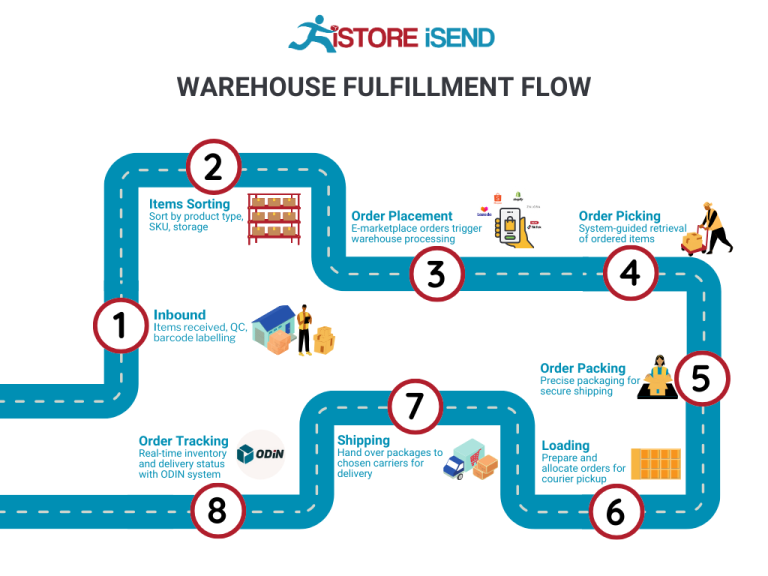
Effective packing is essential for preventing damage during transit, which can lead to customer dissatisfaction and increased costs for replacements or refunds. Moreover, the packing process must also consider shipping efficiency. Utilizing the right-sized packaging can reduce shipping costs and minimize waste. Advanced fulfillment centers may employ automated packing systems that optimize the packing process, ensuring consistency and accuracy.
5. Shipping & Delivery
The final step in the fulfillment process is shipping and delivery. Once orders are packed, they are labeled and prepared for shipment. This involves selecting the appropriate carrier (e.g., UPS, FedEx, USPS) based on cost, speed, and reliability. Orders may be sent directly to customers or transferred to a sortation center, where they are organized for more efficient shipping.
Shipping and delivery are pivotal because they represent the last touchpoint with the customer. Timely and accurate delivery can significantly influence customer satisfaction and loyalty. Utilizing technologies such as real-time tracking and automated notifications can enhance the customer experience by keeping them informed about their order status. Efficient shipping processes can also help businesses meet delivery promises, particularly for those offering expedited shipping options like Amazon Prime.
In conclusion, each step of the order fulfillment process plays a vital role in ensuring that customers receive their products on time and in good condition. By optimizing these stages, e-commerce businesses can enhance operational efficiency, reduce costs, and ultimately improve customer satisfaction.
Comparing Fulfillment Models: In-House vs. 3PL vs. Dropshipping
Fulfillment Model Comparison
| Model | Who Handles Inventory | Best For (Business Stage) | Key Advantage | Key Disadvantage |
|---|---|---|---|---|
| In-House Fulfillment | The business itself | Established businesses with stable sales | Full control over inventory and operations | High overhead costs and resource-intensive |
| Third-Party Logistics (3PL) | A third-party provider | Growing businesses seeking scalability | Reduced operational burden and access to expertise | Less control over the fulfillment process |
| Dropshipping | Supplier or manufacturer | Startups and businesses testing markets | Low startup costs and minimal inventory risk | Lower profit margins and reliance on suppliers |
In-House Fulfillment
In-house fulfillment involves managing all aspects of inventory, warehousing, and shipping within the business itself. This model is ideal for established businesses with stable sales and a clear understanding of their logistics needs. The key advantage of in-house fulfillment is the complete control it offers over inventory management, order processing, and customer service. Businesses can implement tailored solutions that align with their brand and customer expectations. However, this model comes with significant overhead costs, including warehousing, labor, and technology investments. Additionally, it can be resource-intensive, requiring a dedicated team to handle logistics, which may not be feasible for smaller operations or startups. As businesses scale, they may find it challenging to keep up with demand without increasing resources, potentially impacting service levels.
Third-Party Logistics (3PL)
Third-party logistics (3PL) providers offer a solution for businesses looking to outsource their fulfillment operations. This model is particularly beneficial for growing businesses that need to scale quickly without the burden of managing logistics in-house. 3PL providers handle inventory storage, order processing, and shipping, allowing businesses to focus on core activities such as marketing and product development. The key advantage of using a 3PL is the reduced operational burden; businesses can leverage the expertise and resources of the provider, often gaining access to advanced technology and logistics networks. However, the main disadvantage is the loss of control over the fulfillment process. Businesses must rely on their 3PL partner to maintain quality standards, which can lead to potential issues if the provider does not meet expectations. Moreover, businesses may face challenges in communication and alignment with the 3PL, particularly if the provider is not well integrated into the company’s operations.
Dropshipping
Dropshipping is a fulfillment model where the retailer does not hold inventory but instead relies on suppliers or manufacturers to fulfill orders directly to customers. This model is particularly attractive for startups and businesses testing new markets, as it requires minimal upfront investment and eliminates the risk associated with unsold inventory. The primary advantage of dropshipping is the low startup costs; businesses can launch without the financial burden of purchasing inventory or maintaining a warehouse. Additionally, it allows for a wide product range without the need to manage stock. However, dropshipping comes with its challenges. The most significant drawback is the lower profit margins, as retailers often have to pay higher prices to suppliers. Moreover, businesses are highly dependent on their suppliers for inventory management, shipping, and quality control, which can lead to issues such as stockouts, shipping delays, and inconsistent product quality. This reliance can impact customer satisfaction and brand reputation, making it crucial for businesses to choose reliable suppliers and maintain open lines of communication.
Conclusion
Choosing the right fulfillment model is a critical decision for e-commerce businesses, as it directly impacts operational efficiency, customer satisfaction, and overall scalability. Each model—In-House Fulfillment, 3PL, and Dropshipping—offers unique advantages and disadvantages that must be carefully evaluated against the specific needs and stage of the business. By understanding these differences, business owners can make informed decisions that align with their growth strategies and operational capabilities, ultimately leading to improved performance and customer loyalty.
A Deep Dive into Amazon FBA: Pros, Cons, and Who It’s For
Understanding Fulfillment by Amazon (FBA)
Fulfillment by Amazon (FBA) is a service that allows e-commerce sellers to store their products in Amazon’s extensive network of fulfillment centers. Once products are stored, Amazon takes on the responsibility for storage, packaging, and shipping directly to customers. This service is particularly appealing for businesses looking to leverage Amazon’s vast infrastructure, customer service, and logistical capabilities.
When a customer places an order for an FBA product, Amazon picks, packs, and ships the product on behalf of the seller. Additionally, FBA items are eligible for Amazon Prime, which provides faster shipping options and increases visibility in searches, ultimately boosting sales potential. Sellers also benefit from Amazon’s customer service and returns management, which can alleviate operational burdens.
How FBA Works
-
Setup: Sellers create an Amazon Seller account and enroll in FBA. They then prepare their products according to Amazon’s guidelines, which include labeling and packaging requirements.
-
Shipping Inventory: Once products are ready, sellers ship their inventory to Amazon fulfillment centers. Amazon has over 180 fulfillment centers strategically located to optimize shipping times across the United States and globally.
-
Storage: Products are stored in Amazon’s warehouses until they are sold. Sellers can track their inventory levels through their Amazon Seller account.
-
Order Fulfillment: When a customer orders a product, Amazon handles the picking, packing, and shipping. Customers benefit from fast shipping options, including same-day or two-day delivery for Prime members.
-
Customer Service: Amazon also manages customer inquiries and returns for FBA products, providing a seamless experience for both sellers and buyers.
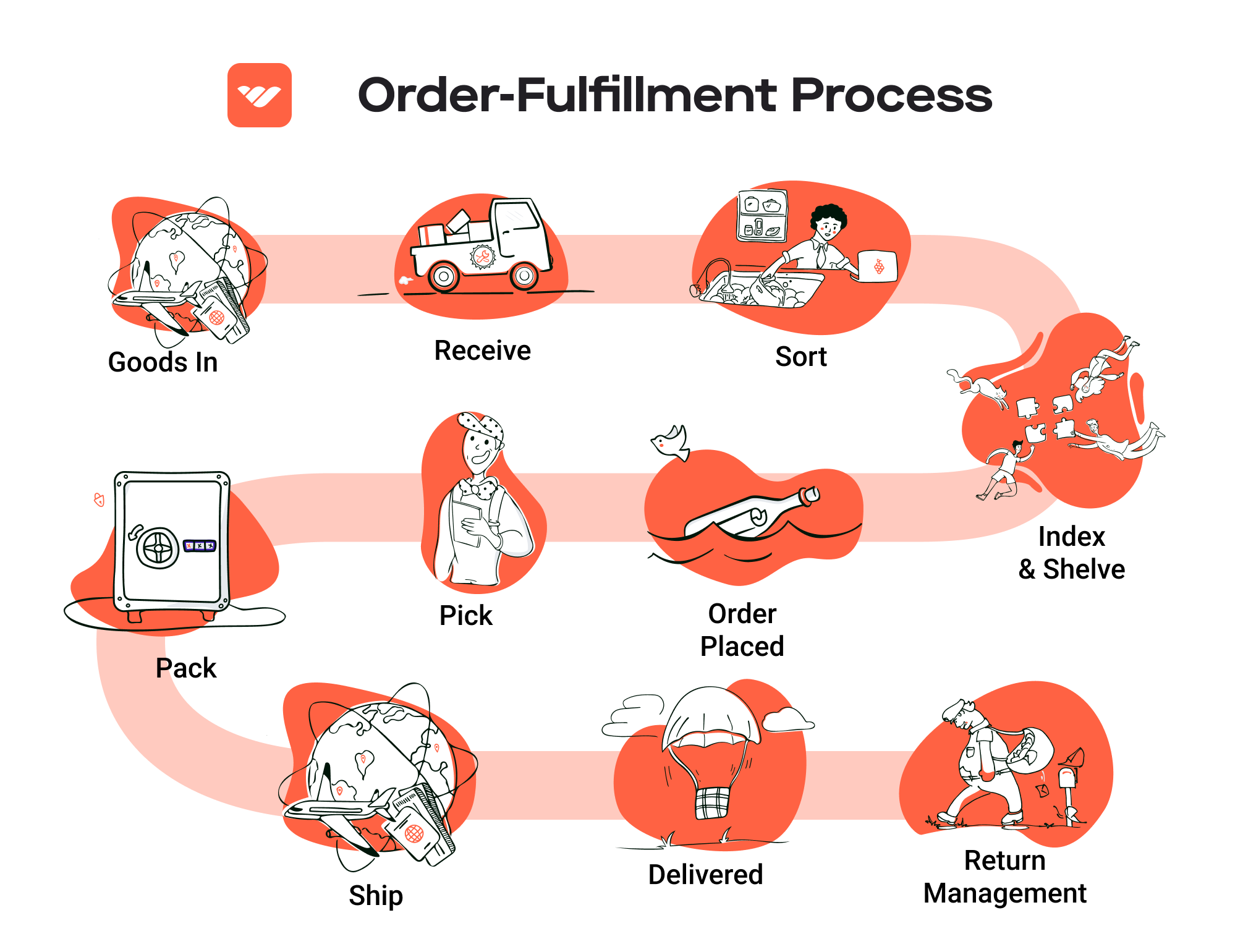
Pros of Fulfillment by Amazon (FBA)
-
Prime Eligibility: One of the most significant advantages of FBA is that products become eligible for Amazon Prime. This not only increases visibility but also attracts a loyal customer base that prefers fast shipping options.
-
Customer Trust: Leveraging Amazon’s brand reputation can help build trust with customers. Buyers are more likely to purchase from an FBA seller knowing they are backed by Amazon’s customer service and return policies.
-
Multi-Channel Fulfillment: FBA allows sellers to fulfill orders from other sales channels, such as their own websites or third-party platforms. This flexibility can help streamline operations and improve inventory management.
-
Scalability: As a seller, you can scale your business without worrying about the logistics of shipping, storage, and customer service. FBA allows you to focus on growth and product development.
-
Reduced Operational Burden: By outsourcing fulfillment to Amazon, sellers can free up time and resources to focus on other aspects of their business, such as marketing and product sourcing.
Cons of Fulfillment by Amazon (FBA)
-
High Fees: FBA comes with various fees, including storage fees for inventory stored in Amazon’s warehouses and fulfillment fees based on the size and weight of the products. These costs can eat into profit margins, especially for smaller sellers.
-
Strict Inventory Rules: Amazon has stringent guidelines regarding inventory management. Sellers must ensure they adhere to these rules to avoid penalties, which can include being charged for unfulfilled inventory or having their listings removed.
-
Commingling Risks: FBA products may be commingled with inventory from other sellers. This means that if a customer receives a defective or damaged product, it can lead to negative reviews and potential returns, impacting the seller’s reputation.
-
Limited Control Over Shipping: While Amazon handles logistics, sellers may have limited control over how their products are packaged and shipped, which can affect branding and customer experience.
-
Dependency on Amazon: Relying heavily on FBA can lead to risks if Amazon changes its policies, increases fees, or experiences technical issues. Sellers must be prepared for potential disruptions.
Who is FBA Best For?
Fulfillment by Amazon is particularly beneficial for:
-
Small to Medium-Sized Businesses: Companies that lack the infrastructure to handle logistics effectively can leverage FBA to compete with larger brands without significant upfront investments.
-
Sellers with High Volume Sales: Businesses that have a consistent sales volume can benefit from the efficiencies of FBA, as the fees can be offset by higher sales and reduced operational costs.
-
E-commerce Entrepreneurs: New sellers looking to quickly establish a presence on Amazon can utilize FBA to access its vast customer base and streamline operations.
-
Niche Product Sellers: Sellers with unique or niche products that may require specialized shipping can take advantage of Amazon’s extensive reach and customer trust to penetrate their target market effectively.
In conclusion, while Fulfillment by Amazon offers numerous advantages that can facilitate growth and streamline logistics, it is essential for sellers to weigh these benefits against the potential drawbacks. Understanding the dynamics of FBA can empower e-commerce business owners to make informed decisions about their fulfillment strategies and ultimately drive their businesses forward.
Core Services Offered by Fulfillment Centers
Inventory Management & Warehousing
Inventory management and warehousing are foundational services provided by fulfillment centers. This process involves the systematic tracking and storage of goods that e-commerce businesses sell. Fulfillment centers maintain a robust inventory management system that allows businesses to monitor stock levels in real-time, ensuring that they can meet customer demand without overstocking or running out of products.
Benefits:
1. Optimized Storage Solutions: Fulfillment centers offer scalable storage solutions, accommodating seasonal fluctuations in inventory levels. This flexibility helps businesses manage costs effectively without the burden of maintaining their own warehouse.
-
Reduced Risk of Stockouts: By utilizing sophisticated inventory management systems, fulfillment centers enable businesses to avoid stockouts, thereby improving customer satisfaction and maintaining sales momentum.
-
Data-Driven Insights: Access to detailed inventory reports allows e-commerce businesses to make informed decisions regarding purchasing and sales strategies, ultimately leading to improved operational efficiency.
Pick and Pack Services
Pick and pack services are crucial for preparing orders for shipment. This process involves selecting (picking) items from the warehouse based on customer orders and then packaging (packing) them appropriately for delivery. Fulfillment centers employ trained staff and automated systems to ensure accuracy and efficiency in this critical phase of the supply chain.
Benefits:
1. Speed and Accuracy: Fulfillment centers are equipped with advanced technologies that streamline the picking and packing process, significantly reducing the time it takes to fulfill orders. This speed is essential for maintaining customer satisfaction, especially for businesses leveraging Amazon’s Prime shipping service.
-
Quality Control: With rigorous quality control measures in place, fulfillment centers help minimize errors in order fulfillment. This not only enhances the customer experience but also reduces the costs associated with returns and replacements.
-
Custom Packaging Options: Many fulfillment centers offer customizable packaging solutions, allowing businesses to create a unique unboxing experience for customers. This can enhance brand recognition and customer loyalty.
Kitting and Assembly
Kitting and assembly services refer to the process of combining individual items into ready-to-sell products or bundles. This service is particularly valuable for e-commerce businesses that offer products that are frequently sold together or require assembly before shipping.
Benefits:
1. Enhanced Product Offerings: By creating kits or bundles, e-commerce businesses can increase their average order value and provide customers with more value. For example, combining a camera with essential accessories can enhance the customer’s purchasing experience.
-
Streamlined Operations: Outsourcing kitting and assembly to fulfillment centers allows businesses to focus on their core competencies, such as marketing and product development, rather than on logistical complexities.
-
Inventory Efficiency: By assembling products in advance, businesses can better manage their inventory and reduce the time it takes to fulfill orders, thereby improving overall operational efficiency.
Returns Management (Reverse Logistics)
Returns management, often referred to as reverse logistics, is a critical service that deals with the process of handling returned products. Fulfillment centers streamline this process by managing returns efficiently, inspecting returned items, and determining the appropriate course of action, whether that’s restocking, refurbishing, or recycling.
Benefits:
1. Customer Satisfaction: An efficient returns process is vital for maintaining customer satisfaction. Fulfillment centers can process returns quickly, ensuring that customers receive refunds or exchanges promptly, which can improve brand loyalty.
-
Cost Management: By handling returns effectively, fulfillment centers help businesses minimize the costs associated with returns, such as shipping and restocking fees. This can significantly impact the bottom line, especially for e-commerce businesses that experience high return rates.
-
Data Insights: Returns management services often include analytics on return reasons and trends. This data can provide valuable insights for businesses, helping them identify product issues, improve quality, and enhance customer satisfaction.
In conclusion, fulfillment centers offer a suite of core services that are integral to the success of e-commerce businesses. By leveraging inventory management, pick and pack services, kitting and assembly, and returns management, businesses can streamline their operations, enhance customer satisfaction, and ultimately scale their sales and logistics effectively. Embracing these services is essential for any e-commerce entrepreneur looking to thrive in a competitive landscape.
How to Choose a Fulfillment Partner: A 6-Point Checklist
Location & Warehouse Network
Importance:
The geographical location of your fulfillment partner’s warehouses plays a crucial role in your logistics efficiency. A partner with warehouses strategically placed near your customer base can significantly reduce shipping times and costs.
Questions to Ask:
– Where are your warehouses located, and how do they align with our target markets?
– What is your average shipping time to major cities from your warehouses?
– How do you manage inventory across multiple locations to ensure quick fulfillment?
Technology & Integrations
Importance:
In today’s digital age, seamless technology integration is essential for efficient operations. A fulfillment partner that utilizes advanced technology can provide real-time tracking, inventory management, and automated order processing, which enhances your customer experience.
Questions to Ask:
– What technology platforms do you use for order management and inventory tracking?
– Can your systems integrate with our e-commerce platform (e.g., Shopify, Amazon)?
– Do you offer API access for real-time data sharing and reporting?
Specializations (e.g., Cold Storage, Oversized Items)
Importance:
Depending on your product range, you may need a fulfillment partner that specializes in certain types of products. For example, if you sell perishable goods, a partner with cold storage capabilities is essential. Similarly, oversized items may require specific handling and storage solutions.
Questions to Ask:
– What specific product categories do you specialize in?
– Do you have facilities for cold storage or handling fragile items?
– How do you manage the logistics for oversized or heavy items?
Scalability & Capacity
Importance:
As your business grows, your fulfillment partner must be able to scale with you. A partner with sufficient capacity can accommodate seasonal spikes in demand without compromising service quality.
Questions to Ask:
– What is your current capacity, and how do you handle peak seasons?
– Can you scale operations quickly if our order volume increases suddenly?
– What is your process for onboarding new clients and integrating their inventory?
Pricing and Contracts
Importance:
Understanding the pricing structure and contract terms of your fulfillment partner is vital for budgeting and financial planning. Transparent pricing can prevent unexpected costs that can erode your profit margins.
Questions to Ask:
– What are your pricing models (e.g., per order, per item, monthly fees)?
– Are there additional fees for storage, packaging, or shipping?
– What are the terms of the contract, and is there flexibility for renegotiation?
Customer Support & Reviews
Importance:
Reliable customer support is essential for resolving issues promptly. A partner with a strong track record of customer service can help maintain your brand reputation and ensure smooth operations.
Questions to Ask:
– What customer support channels do you offer (e.g., phone, email, chat)?
– Can you provide references or case studies from other clients?
– How do you handle customer complaints or issues during the fulfillment process?
When selecting a fulfillment partner, it’s crucial to conduct thorough research and ask the right questions. Each of these six points plays a significant role in determining whether a partner will align with your business goals and operational needs. By taking a structured approach to this decision-making process, you can establish a partnership that supports your growth and enhances your customer satisfaction.
Understanding Fulfillment Pricing: A Breakdown of Common Fees
Initial Setup Fees
When starting with a fulfillment service, businesses often encounter initial setup fees. These fees cover the costs associated with onboarding your account, integrating your inventory management systems, and configuring the necessary logistics protocols. The setup process typically includes creating your seller account, establishing product listings, and setting up storage solutions within the fulfillment center.
Initial setup fees can vary widely based on the complexity of your operations and the fulfillment provider. For instance, a straightforward setup with minimal inventory might incur lower fees, while a more intricate setup involving multiple product categories or custom packaging requirements could lead to higher charges. It’s crucial to discuss your specific needs with your fulfillment partner to obtain a clear understanding of these costs.
Receiving Fees
Receiving fees are charged when your products arrive at the fulfillment center. These fees cover the labor and resources involved in unloading, inspecting, and storing your goods. The calculation of receiving fees is often based on the number of units received or the volume of goods processed.
For example, if you send a shipment of 1,000 units, you might be charged a flat fee per unit, or it could be tiered based on the total number of units. Some providers may also charge additional fees for special handling, such as oversized items or those requiring special inspection. To minimize receiving fees, consider consolidating shipments or optimizing your packaging to reduce handling complexity.
Storage Fees (per pallet/bin)
Storage fees are incurred for the space your inventory occupies within the fulfillment center. These fees are typically calculated based on the volume of your products, measured in pallets or bins, and are charged on a monthly basis.
Different fulfillment centers may have varying pricing models; some might charge a flat rate per pallet, while others could have tiered pricing based on the total volume stored. Seasonal fluctuations can also impact storage fees, as many businesses increase their inventory during peak seasons. To manage storage costs effectively, conduct regular inventory audits to ensure you are not overstocking items that do not sell quickly.
Pick & Pack Fees (per item/order)
Pick and pack fees are applied each time an order is processed. This fee covers the labor required to pick items from storage, pack them for shipment, and prepare them for delivery. The calculation of pick and pack fees is usually based on the number of items per order or the total number of orders processed.
For instance, if a customer orders three items, you may be charged a base fee for the first item and a lower fee for each subsequent item. Some fulfillment centers might offer volume discounts for businesses with high order volumes, which can significantly reduce per-order costs. To optimize your pick and pack expenses, consider bundling products into multi-item listings or offering promotions that encourage bulk purchases.
Shipping Fees
Shipping fees are perhaps the most variable cost in the fulfillment pricing structure, as they depend on the destination, shipping method, and carrier used. Fulfillment centers often partner with multiple shipping providers, allowing businesses to choose the most cost-effective options. Shipping fees can be calculated based on weight, dimensions, and delivery speed.
Many fulfillment providers offer discounted shipping rates due to their volume, which can be advantageous for businesses looking to save on shipping costs. Additionally, utilizing regional distribution centers can help reduce shipping distances and costs. To keep shipping expenses manageable, continuously monitor your shipping strategies and consider negotiating rates with carriers based on your shipping volume.
Tips for Getting an Accurate Quote
When seeking fulfillment pricing, it’s essential to approach the process methodically to ensure you receive an accurate quote. Here are some practical tips:
-
Be Specific About Your Needs: Clearly outline your product types, anticipated order volumes, and any special requirements (e.g., kitting or custom packaging) to help providers give you a tailored quote.
-
Request Detailed Pricing Structures: Ask for a breakdown of all potential fees, including any variable costs that may arise based on order fluctuations or seasonal demands.
-
Compare Multiple Providers: Don’t settle for the first quote you receive. Compare pricing from several fulfillment centers to gauge the market rate and identify potential savings.
-
Inquire About Discounts: Ask about volume discounts, seasonal pricing, and any promotional offers that could lower your overall costs.
-
Factor in Hidden Costs: Look beyond the surface-level fees and consider potential hidden costs, such as returns processing, special handling, or long-term storage fees, which can impact your bottom line.
By understanding these common fulfillment pricing models and carefully evaluating your options, you can make informed decisions that will help scale your e-commerce operations efficiently and effectively.
Frequently Asked Questions (FAQs) about Fulfillment
1. What is the Amazon Fulfillment Center lex1?
The Amazon Fulfillment Center lex1, located at 1850 Mercer Rd, Lexington, KY, is part of Amazon’s extensive network of warehouses designed to store, process, and ship products for e-commerce businesses. This facility is strategically situated to serve a diverse range of customers by leveraging Amazon’s logistics capabilities, including fast shipping and inventory management.
2. How does the Fulfillment by Amazon (FBA) service work?
Fulfillment by Amazon (FBA) allows sellers to store their products in Amazon’s fulfillment centers. When a customer orders an item, Amazon takes care of the packing, shipping, and customer service. This service enables sellers to offer Prime shipping, which can significantly enhance their sales potential by attracting more customers who value quick delivery.
3. What’s the difference between a warehouse and a fulfillment center?
A warehouse is primarily a storage facility where goods are kept until they are needed. In contrast, a fulfillment center is a specialized type of warehouse that focuses on processing and shipping orders directly to customers. Fulfillment centers are equipped with advanced logistics technology to handle inventory management, order processing, and quick shipping, which is crucial for e-commerce businesses.
4. What is a Third-Party Logistics Provider (3PL)?
A Third-Party Logistics Provider (3PL) is a company that offers logistics services to businesses, including warehousing, fulfillment, and transportation. By partnering with a 3PL, businesses can leverage their expertise and infrastructure to streamline operations, reduce costs, and focus on core business activities, such as product development and marketing.
5. How much do fulfillment services cost?
The cost of fulfillment services can vary widely based on factors such as the volume of orders, the type of products, storage space requirements, and shipping destinations. Typically, costs include storage fees, picking and packing fees, and shipping fees. Businesses should evaluate multiple providers to find a solution that fits their budget and service needs.
6. What types of products can be stored at the Amazon Fulfillment Center lex1?
The Amazon Fulfillment Center lex1 accommodates a wide range of products, including fashion items, electronics, beauty products, home decor, toys, and even pre-owned devices. This diversity allows sellers to reach a broad customer base while taking advantage of Amazon’s logistics capabilities.
7. How does Amazon ensure fast shipping from its fulfillment centers?
Amazon employs a sophisticated logistics network that includes strategically located fulfillment centers, advanced inventory management systems, and partnerships with major carriers. By utilizing a combination of fulfillment centers and sortation centers, Amazon can efficiently organize and ship orders, often delivering products to Prime members within two days.
8. Can I visit the Amazon Fulfillment Center lex1?
While Amazon occasionally offers guided tours of its fulfillment centers to the public, access may be limited due to operational security and safety protocols. Interested individuals should check Amazon’s official website or contact the fulfillment center directly for information on scheduled tours or open house events.
9. How do I get started with using Amazon Fulfillment services?
To begin using Amazon Fulfillment services, you need to create an Amazon seller account and enroll in the FBA program. After setting up your account, you can list your products, send inventory to the fulfillment center, and manage your orders through the Amazon Seller Central dashboard, which provides tools for tracking performance and sales.
10. What support does Amazon provide to businesses using their fulfillment services?
Amazon offers extensive support to businesses using their fulfillment services, including access to resources through Seller Central, customer service assistance, and tools for managing inventory and orders. Additionally, Amazon provides educational materials, webinars, and forums for sellers to share experiences and best practices, helping them optimize their fulfillment strategies.
Conclusion: Is Outsourcing Fulfillment the Right Move for Your Business?
Evaluating the Benefits of Outsourcing Fulfillment
Outsourcing your fulfillment needs can be a transformative decision for your e-commerce business, bringing several key benefits that enhance operational efficiency and customer satisfaction. By leveraging a fulfillment service, you can save significant time and resources. This allows you to focus on core business activities such as marketing, product development, and customer engagement, rather than getting bogged down in logistics.
Scalability is another compelling advantage. As your business grows, so do your fulfillment needs. A dedicated fulfillment partner, like an Amazon Fulfillment Center, can easily accommodate fluctuations in order volume without the need for substantial investments in infrastructure or personnel. This flexibility is crucial for businesses looking to capitalize on seasonal trends or unexpected spikes in demand.
Moreover, outsourcing fulfillment gives you access to specialized expertise. Fulfillment centers are equipped with the latest technology and best practices in inventory management, shipping, and customer service. This expertise not only enhances operational efficiency but also improves delivery times and customer experiences, fostering loyalty and repeat business.
Choosing the Right Partner for Growth
While the benefits of outsourcing fulfillment are clear, selecting the right partner is critical to your success. Not all fulfillment services are created equal; it’s essential to evaluate their capabilities, technology, and alignment with your business goals. A thoughtful partnership can help you navigate the complexities of logistics while supporting your growth trajectory.
Take Action Today
If you’re considering whether outsourcing fulfillment is the right move for your business, start by auditing your current shipping processes. Assess your pain points and identify areas where a fulfillment partner could provide value. By taking this step, you can make an informed decision that positions your business for sustained growth and success.
Important Disclaimer
⚠️ Important Disclaimer
The information in this guide is for educational purposes. Fulfillment services, pricing, and platform features change frequently. Always conduct your own due diligence and consult with providers directly before making business decisions.
